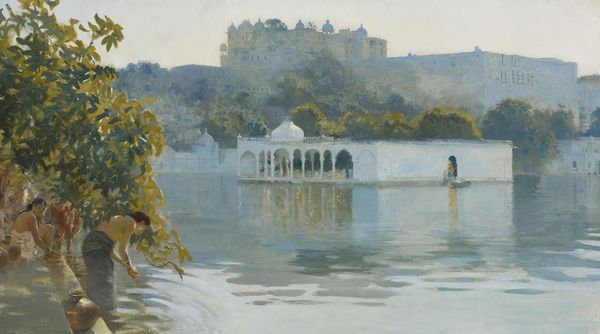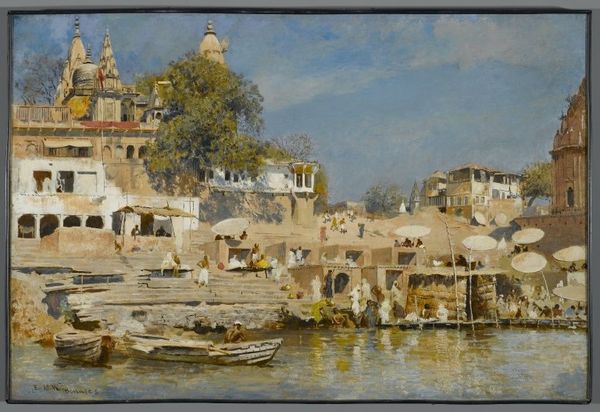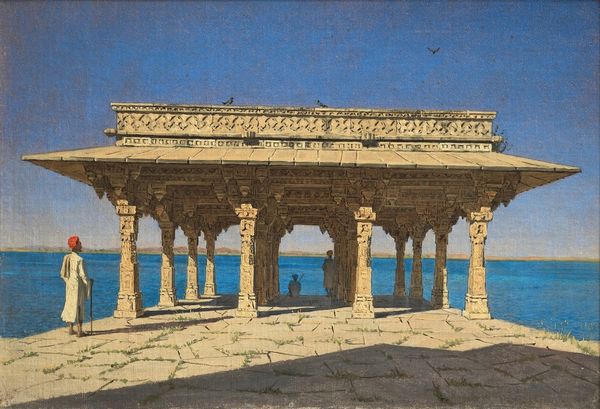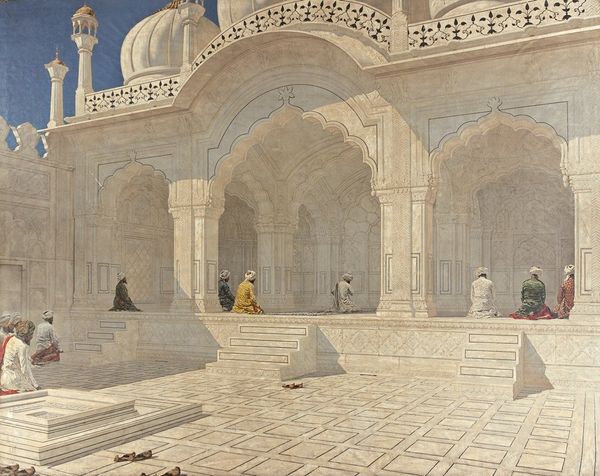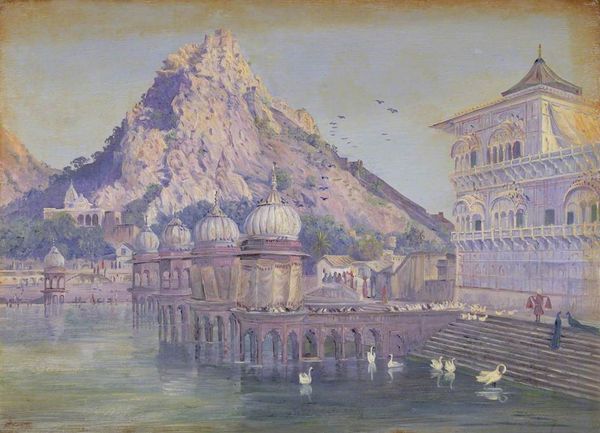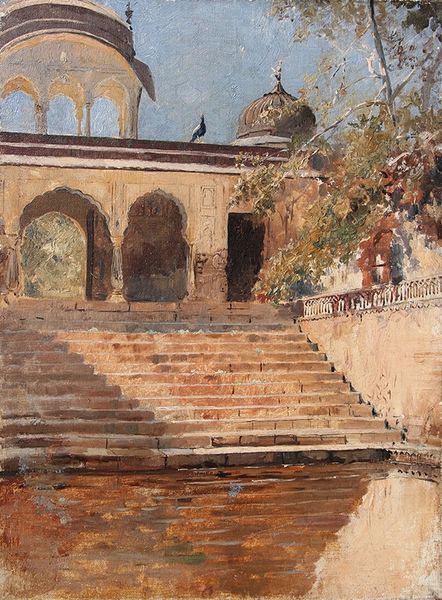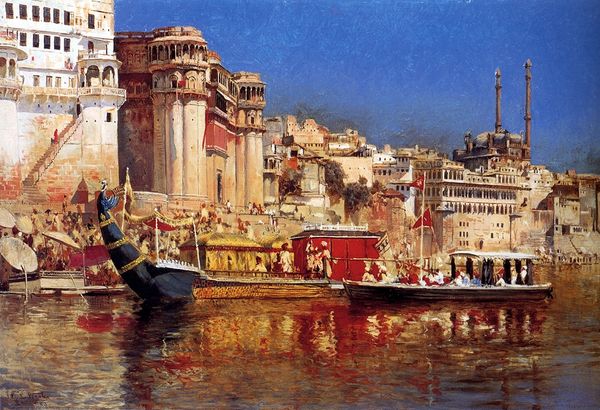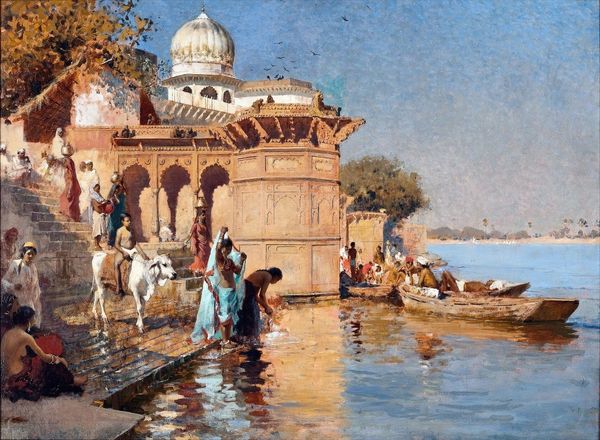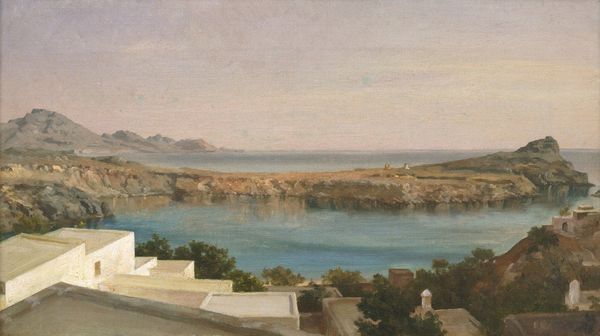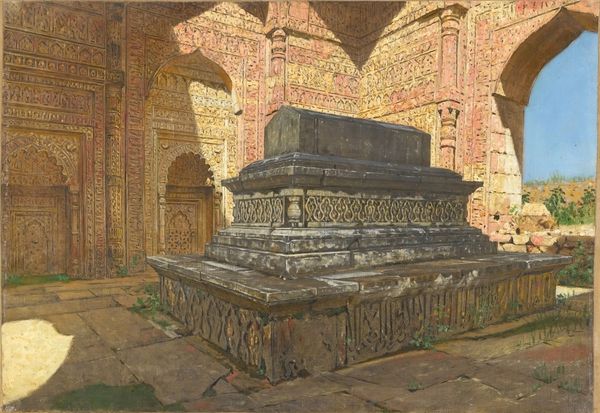
Rajnagar. Marble Embankment Decorated with Bas-Reliefs on a Lake in Udaipur 1874
0:00
0:00
Copyright: Public Domain: Artvee
Curator: What strikes me first is the tranquil stillness of this watercolor. It's almost meditative. Editor: I see it too, a deceiving calmness. We are looking at Vasily Vereshchagin’s “Rajnagar. Marble Embankment Decorated with Bas-Reliefs on a Lake in Udaipur,” painted in 1874. Curator: Udaipur! This image is full of familiar architectural features. It speaks strongly to established codes in Indian design, those carved pillars, the formal arrangement. And there is so much repetition, but what do you make of it? Editor: Symbolically, the pillars might represent support and connection to the divine. Visually, the arches frame the view, guiding our eyes to the scene beyond, like portals of access. It presents, really, an "orientalist" fantasy, where Western audiences saw themselves reflected in their colonized territories. Curator: I appreciate your perspective. For me, though, this goes far beyond a mere snapshot in time or "fantasy." Vereshchagin engages here with a space very coded by class and gender, made explicit in the tiny figures along the steps in the lake. What kind of rituals took place there, who were those figures in relation to those rituals and to the space in general? I wonder who and what the artwork excludes. Editor: Those figures are evocative, aren't they? They draw me into an exploration of collective memory. I feel drawn into imagining what rituals occurred by the river, the types of social life along the basin as mirrored by the river. It’s as if that basin served a place for the real, the ritual and even the political to converge, like the basin acts a palimpsest carrying years of human interactions Curator: Exactly. Understanding art within this scope allows us to be aware of what images transmit but also hide. I consider how art becomes an ideological tool in reinforcing power structures, making it key to reveal and reclaim obscured narratives, while engaging contemporary theories about identity and representation to reveal who the image served. Editor: It makes me reconsider what symbols persist. Thank you for sharing a perspective that sheds light to a history that lies hidden beneath symbols. Curator: And thank you, for lending depth to what’s so visibly rendered.
Comments
No comments
Be the first to comment and join the conversation on the ultimate creative platform.
